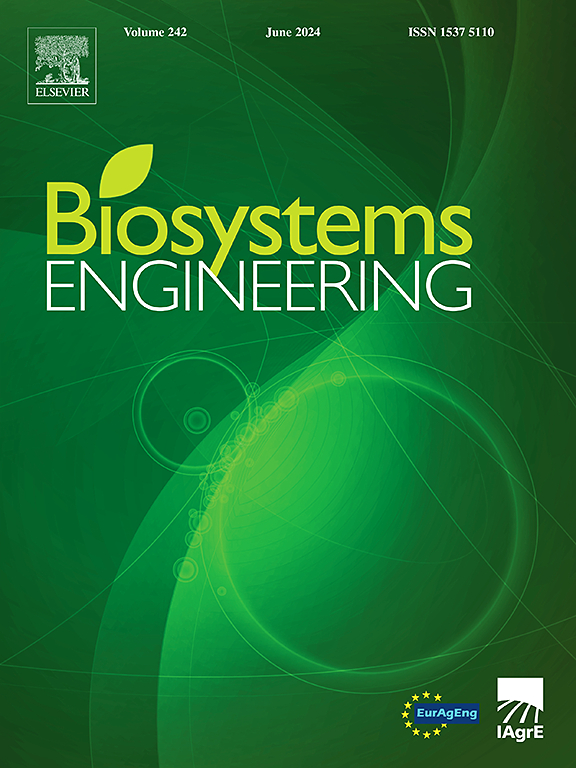Precision heating strategy based dynamic heater path planning for frost protection in apple orchards
IF 4.4
1区 农林科学
Q1 AGRICULTURAL ENGINEERING
引用次数: 0
Abstract
Frost is one of the severe weather events causing economic losses in agriculture. Traditionally, heating can be applied in an orchard during a frost event either using fixed heaters or mobile heaters to travel through. However, both traditional heating strategies have limited heating capacity. In this study, a precision heating strategy was proposed to prioritise applying heat to orchard canopies with high heating demands utilising multiple heaters. The precision heating experiment in a simulated orchard environment with dynamic multiple goal points was implemented by an improved A-Star path-planning algorithm, in which a path cost estimation method based on linear programming was presented to find the optimal paths for multiple heaters and a conflict-based search (CBS) method was used to generate collision-free paths. In addition, an estimation method for the heater number based on the precision heating strategy was proposed and the difference of the heater number between precision heating and traditional heating was compared. The simulated results show that the improved A-Star algorithm had higher search efficiency, resulting in 36.8% less total path cost and 98.7% less computational time than the control group. The comparison between precision heating and traditional heating indicates that the number of heaters used in the precision heating strategy decreased by 96.8% and 85.9% compared to the traditional fixed heating strategy and mobile heating strategy, respectively. Overall, this study provided a concept of high heat-demand priority precision heating and proved its superiority for frost protection.
基于动态加热路径规划的苹果园防冻精确加热策略
霜冻是造成农业经济损失的严重天气事件之一。传统上,在霜冻期间,可以使用固定加热器或移动加热器在果园中加热。然而,这两种传统供暖策略的供热能力有限。在这项研究中,提出了一种精确加热策略,利用多个加热器优先对高加热需求的果园树冠进行加热。采用改进的a - star路径规划算法,对具有动态多目标点的模拟果园环境进行精密加热实验,提出了基于线性规划的路径成本估计方法,用于寻找多个加热器的最优路径,并采用基于冲突的搜索(CBS)方法生成无碰撞路径。此外,提出了一种基于精密加热策略的加热器数量估算方法,并比较了精密加热与传统加热之间的加热器数量差异。仿真结果表明,改进的A-Star算法具有更高的搜索效率,与对照组相比,总路径开销减少36.8%,计算时间减少98.7%。精密加热与传统加热的对比表明,与传统的固定加热和移动加热相比,精密加热策略中使用的加热器数量分别减少了96.8%和85.9%。总的来说,本研究提出了高热需求优先精密加热的概念,证明了其在防冻方面的优越性。
本文章由计算机程序翻译,如有差异,请以英文原文为准。
求助全文
约1分钟内获得全文
求助全文
来源期刊

Biosystems Engineering
农林科学-农业工程
CiteScore
10.60
自引率
7.80%
发文量
239
审稿时长
53 days
期刊介绍:
Biosystems Engineering publishes research in engineering and the physical sciences that represent advances in understanding or modelling of the performance of biological systems for sustainable developments in land use and the environment, agriculture and amenity, bioproduction processes and the food chain. The subject matter of the journal reflects the wide range and interdisciplinary nature of research in engineering for biological systems.
 求助内容:
求助内容: 应助结果提醒方式:
应助结果提醒方式:


